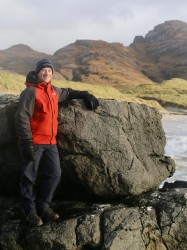BibTex format
@article{Nathwani:2023:10.1029/2022jb025933,
author = {Nathwani, CL and Wilkinson, JJ and Brownscombe, W and John, CM},
doi = {10.1029/2022jb025933},
journal = {Journal of Geophysical Research: Solid Earth},
pages = {1--19},
title = {Mineral texture classification using deep convolutional neural networks: An application to zircons from porphyry copper deposits},
url = {http://dx.doi.org/10.1029/2022jb025933},
volume = {128},
year = {2023}
}

